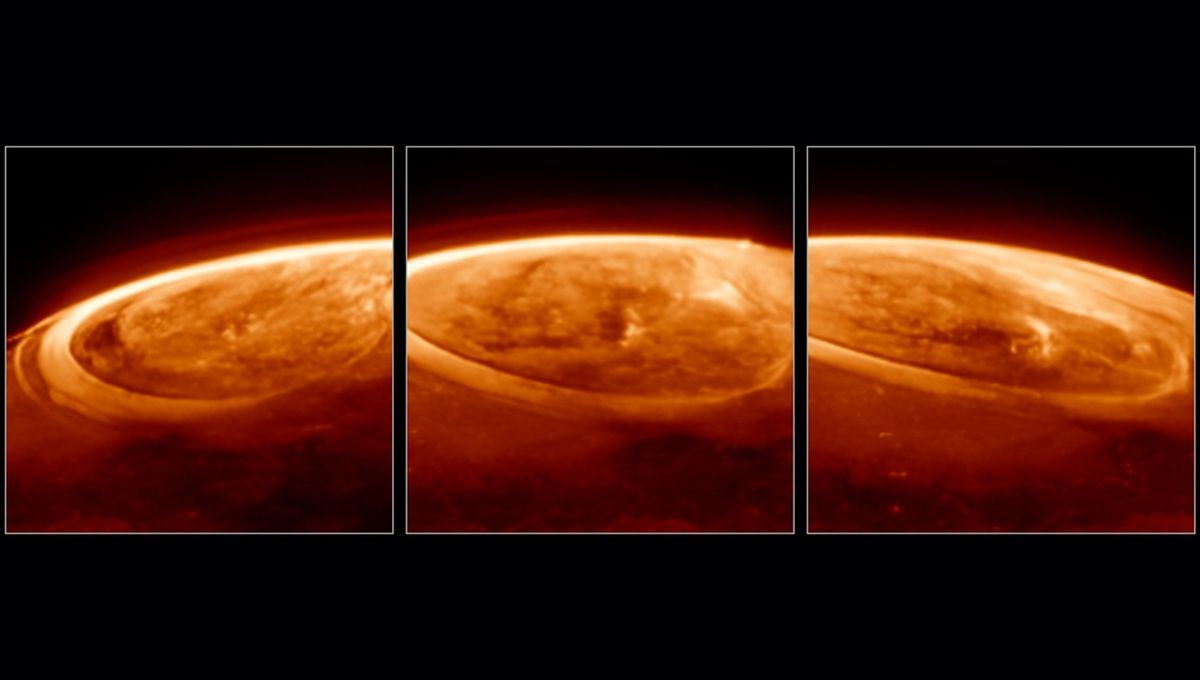
Jupiter’s Aurorae Change Faster Than Previously Thought – But There’s Something Even Odder Going On
How did your country report this? Share your view in the comments.
Quick Summary:
- Researchers have used the space telescopes JWST and Hubble to study the auroral phenomena on Jupiter. The team focused on the very specific emission of trihydrogen cation (H 3 +) This is one of the most common ions in the universe, made of three bound hydrogen atoms that have lost an electron. Jupiter’s magnetosphere is an extremely complex structure, and huge too. It extends 7 million kilometers in a Sunward direction and almost to the orbit of Saturn away from the Sun.
- Jupiter’s magnetosphere is an extremely complex structure, and huge too. It extends 7 million kilometers (4.35 million miles) in a Sunward direction and almost to the orbit of Saturn away from the Sun. The team focused on the very specific emission of trihydrogen cation (H 3 +) This is one of the most common ions in the universe, made of three bound hydrogen atoms.
- Jupiter’s auroras could change our understanding of how the planet’s upper atmosphere heats and cools. The emission from the molecule trihydrogen cation — one of the most abundant ions in the universe — is far more variable than once believed. They’re bigger and hundreds of times brighter than the northern lights on our puny world. The spectacular snapshots were captured by NASA’s James Webb Space Telescope.
Country-by-Country Breakdown:
Original Coverage
Researchers have used the space telescopes JWST and Hubble to study the auroral phenomena on Jupiter. The team focused on the very specific emission of trihydrogen cation (H 3 +) This is one of the most common ions in the universe, made of three bound hydrogen atoms that have lost an electron. Jupiter’s magnetosphere is an extremely complex structure, and huge too. It extends 7 million kilometers in a Sunward direction and almost to the orbit of Saturn away from the Sun. Read full article
Jupiter’s Aurorae Change Faster Than Previously Thought – But There’s Something Even Odder Going On
Jupiter’s magnetosphere is an extremely complex structure, and huge too. It extends 7 million kilometers (4.35 million miles) in a Sunward direction and almost to the orbit of Saturn away from the Sun. The team focused on the very specific emission of trihydrogen cation (H 3 +) This is one of the most common ions in the universe, made of three bound hydrogen atoms. Read full article
There’s Something Very Unusual About Jupiter’s Auroras
Jupiter’s auroras could change our understanding of how the planet’s upper atmosphere heats and cools. The emission from the molecule trihydrogen cation — one of the most abundant ions in the universe — is far more variable than once believed. They’re bigger and hundreds of times brighter than the northern lights on our puny world. The spectacular snapshots were captured by NASA’s James Webb Space Telescope. Read full article
Giant Auroras Modify Jupiter’s Stratospheric Chemistry
Jupiter’s auroras cover an area more than 40,000 kilometers in diameter. This is due to an interplay of charged particles, magnetic field and atmosphere. Jupiter’s magnetic field is about twenty times stronger than Earth’s. Since the impact of comet Shoemaker-Levy 9 in 1994, both types of molecules have similarly distributed widely in Jupiter’s atmosphere. In the region below the aurorae, however, the measurements show significantly less hydrogen cyanide than expected. Read full article
Global Perspectives Summary:
Global media portray this story through varied cultural, economic, and political filters. While some focus on geopolitical ramifications, others highlight local impacts and human stories. Some nations frame the story around diplomatic tensions and international relations, while others examine domestic implications, public sentiment, or humanitarian concerns. This diversity of coverage reflects how national perspectives, media freedom, and journalistic priorities influence what the public learns about global events.
How did your country report this? Share your view in the comments.
Sources:
- Original Article
- Jupiter’s Aurorae Change Faster Than Previously Thought – But There’s Something Even Odder Going On
- There’s Something Very Unusual About Jupiter’s Auroras
- Giant Auroras Modify Jupiter’s Stratospheric Chemistry
Source: https://www.iflscience.com/jupiters-aurorae-change-faster-than-previously-thought-but-theres-something-even-odder-going-on-79193

